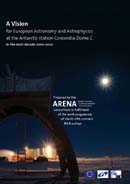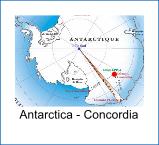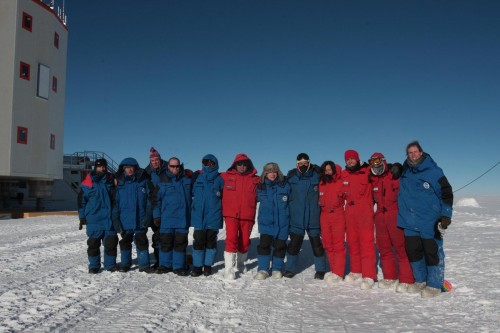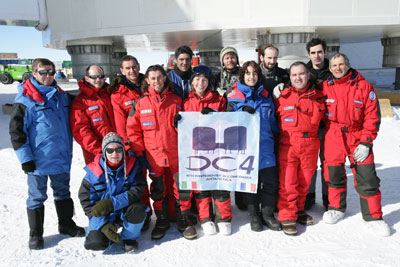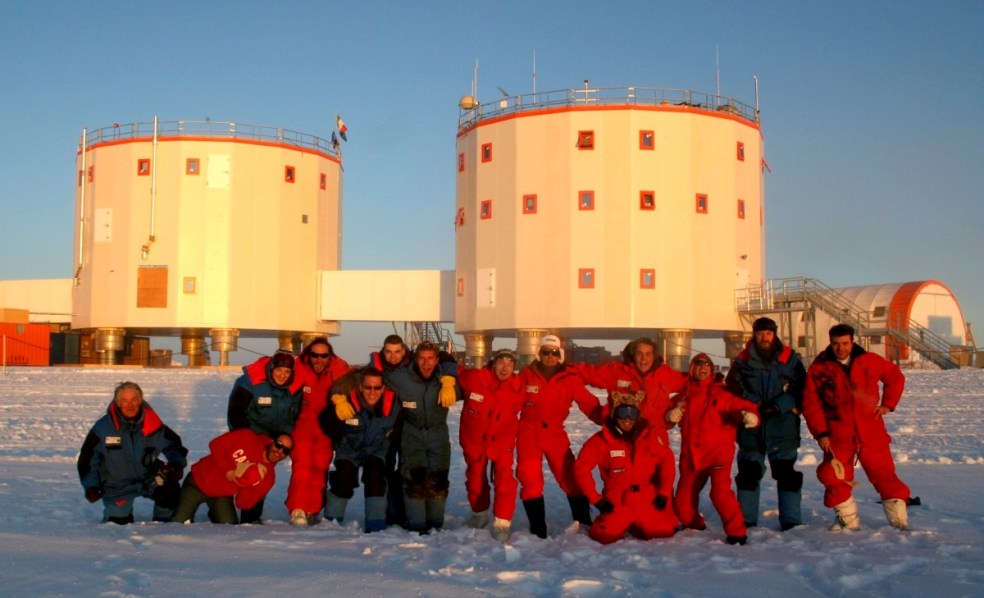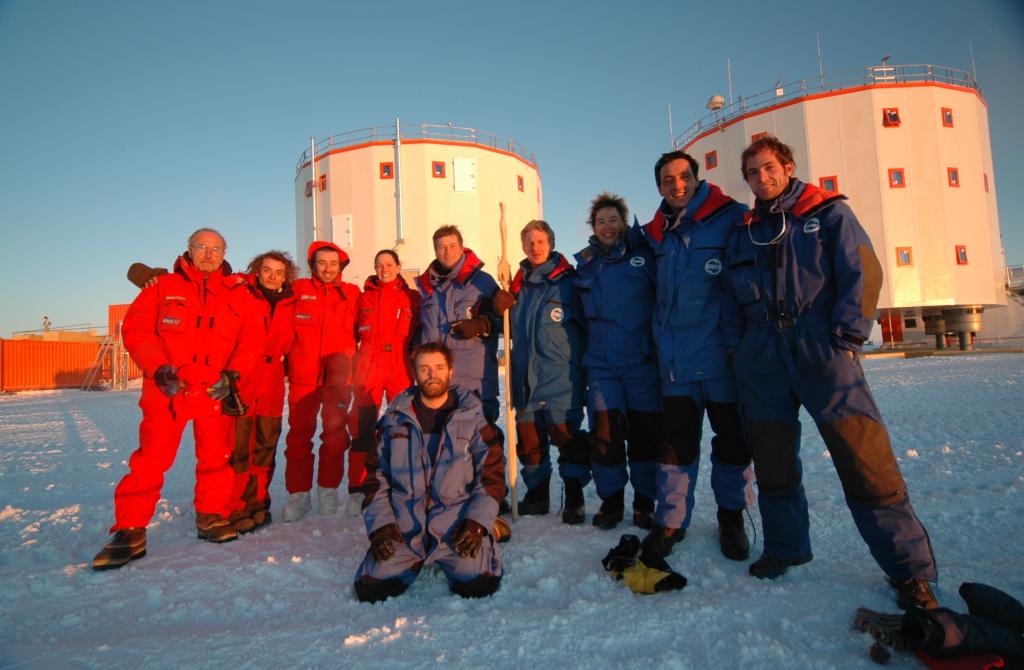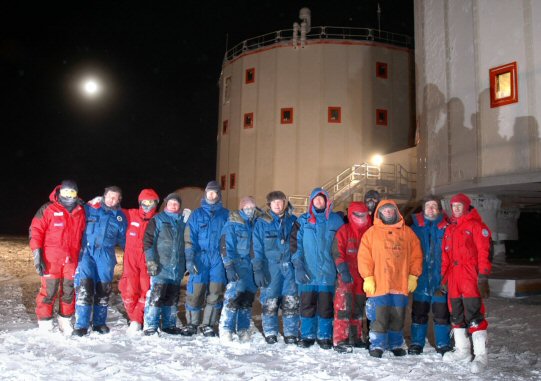The last International Polar Year, which took place 50 years ago (1957-1959, called the International Geophysical Year) was an opportunity to coordinate the international scientific research centers, particularly in Antarctica. This resulted in the construction of many scientific bases on the mainland (now 44, most of them located on the coast) followed by the signing of the Antarctic Treaty by twelve countries (now 46 states have ratified it in different forms).
|

|
|
An Aurora Australis occurs over the Franco-Italian station Concordia at Dome C due to the interaction of the solar wind accelerated by the Earth's magnetic field with our atmosphere. These phenomena occur frequently near the poles since in such places the magnetic field lines are close.
|
Now, Antarctica is a continent solely dedicated to peace and scientific research. The geographical isolation of the 6th continent, in addition to extreme weather conditions which prevail, make the Antarctic Continent a unique place to study the past climate of our planet and understand the present. Thus in 60 years, scientists at the forefront, such as Claude Lorius, theorize that the ice accumulated over the ages retains trapped air bubbles from the atmosphere of the era, and therefore constitutes the history of the chemical composition of the atmosphere of the past. The layers of snow and ice accumulate over time. Access to the deepest layers provides information on the content of greenhouse gases (CO2, methane, sulfur dioxide, nitrogen, carbon monoxide) and the temperature of the planet at different epoches. The ideal place to access the history of our climate.
Dome C was identified as one of those sites in the 70s by glaciologist Claude Lorius and his Grenoble team. Thanks to American logistics, and as part of an international glaciology program, they made their first mission during the austral summer of 1974/1975. A deep ice drilling was carried out in January 1978 about forty km from the present site of the Concordia station. The ice core of 906 meters gives us nearly 35,000 years of climate history of the planet, and thus permits us to obtain valuable information about the culmination of the last ice age (approximately 20,000 years) and about the current warm period that has lasted 10,000 years . This ice coring enabled scientists to demonstrate the link between concentration of greenhouse gases in the atmosphere and surface temperature of the planet. To confirm these results, glaciologists wish to perform deep ice core drilling in order to have long term data on several glacial and interglacial cycles.
